Morning everyone, Shane here. Charlotte gave such a lovely insight to her background as a baker last week I thought I would take a leaf out of her book. There are a lot of new faces on here who may not know who we are or why we do what we do.
Before I dive into my bread baggage in this edition of the Scéal newsletter make sure you’re signed up.
One final very important note. We will be baking Friday 24th March at the Fumbally Stables, 10am - 1pm.
Photos in this weeks newsletter are by Charlotte
I first discovered bread in a library. I’m talking about real bread! But it was in a book. I desperately wanted it to be real. Like really real, as in, in my mouth real, not just on those pages and stuck in my mind.
Ok, this opening paragraph is a little out there, but bear with me; I am going somewhere with this. To me, this is a fork in the road of an important food journey, not just in the creation of our Sesame Miso sourdough bread but also the start of my life as a baker.
I had up to this point tried my hand at many things. From an early age, I worked on my uncle's carrot farm on the sandy shores of the River Nore. Nestled in the Irish countryside, somewhere between Durrow and Abbeyleix. Watercastle is the home of my mother's family farm. Many days spent weeding the vegetable beds, picking stones, sorting carrots, and mud fights with siblings and my many cousins. In between this messing, I happily helped my Granny serve up supper and bake soda breads in her tiny kitchen.
I have fond memories of my Granny peeling carrots and potatoes for the giant family pot of stew. Her hard-worked hands effortlessly peeled a giant spud in one go. Completely hypnotised, I’d watched the single spiral of potato peel fall and collect neatly into her sink basin. The sink was lined with the same worn plastic bowl she’d later use to mix the dough for her evening soda bread bake. She used that giant, opaque mixing bowl for all her kitchen projects. Contently and calmly while she sang along to the radio beside her armchair, which was strategically nestled next to the stove.
My Granny just knew her measurements like the palm of her hand. In more instances than not, she would use the palm of her hand — mostly to suss out the salt or bread soda. She used her hand as if it were a set of measuring spoons or the kitchen scales. Most importantly, she used her intuition, her touch, and feel - a skill developed from years of practice. Muscle memory, telling her what the dough should feel like and how much extra buttermilk or flour to add.
This was my first real taste of cooking, and to be honest, I became so accustomed to it that I took it for granted. It wasn’t until I decided to try my hand at cooking professionally that I fully appreciated how lucky I was to be nurtured and brought up this way from such a young age. And, unavoidably, my upbringing shaped me as a cook and, more recently, as a baker.
So by the age of 23, I was still not sure what to do with myself. I had worked as a farmer, builder, moved to Wales, studied avionics, and worked in an office job. I knew after less than two years (and one mad weekend in Amsterdam) that office life and being away from home just weren’t for me. So I decided to head back to Ireland and give building one more go, this time on my own. I bought a van and a few tools. That was in 2008, and with it, BAM! The recession hit hard. After six months on the dole and sitting on my hole, I needed another change, a new challenge. The only other thing I had a consistent passion for in my life was cooking, so I took myself back to college and this time applied to Culinary Arts at D.I.T. (now T.U.D.).
A Culinary Degree
From this moment on everything changed; I had found my calling and direction on a path. I knew from day one that I loved it - the sights, the speed, the smells, and the sounds. Every high and low, from the exhilaration of service to the expression of creativity. And using my engineering brain to understand the science of it all. Every aspect completely captivated me. All the while, I just knew that it would eventually lead me to becoming the baker I was born to be. Even if it meant working as a chef for a few years first. For some reason, bread just called my name and pulled me in a few different directions. Maybe it was those moments in my Grans kitchen making soda bread.
After dabbling in a few Dublin restaurants for the first few years of college, the first real pull was to the well known River Cottage. Here I got to work for my hero Hugh Fearnley Whittingstall and crew for 3 months, helping in the kitchen. Lending a hand with workshops, working with the teachers, and being on the front line with the foragers on days out, I got to soak up every last bit of information I could. It was at River Cottage that I learned an unmeasurable amount, but most importantly, I learned about myself and the type of cook I wanted to be.
This was the first ‘real’ kitchen I worked in, if I’m being honest. Farm fresh produce went from soil to sink, and from there to the pot, being served up to guests from gate to plate that evening. Sourdough mothers bubbled and spilled out of jars; cuts of meat cured. The place was alive and full of life.
It was after this magic summer of immersive learning that I knew I’d never be happy working in another kitchen that didn’t use fresh, local produce or one that didn’t bake their own bread. This hunt put the Fumbally Cafe in my crosshairs. At the time, the Fumbally were using fresh produce from McNally's and local meats from Lawlor's butcher. However, they weren’t baking their own bread, but they did use one of the best bakers in the city, Rossa Crowe from Le Levain. What they did have was a more relaxed kitchen dynamic and a very supportive ethos. Essentially everyone in the kitchen had equal responsibility and could also influence the menu with dishes and baked goods… You see where this is going.
At the same time, I had returned for my fourth and final year in college. The dreaded thesis paper loomed in the back of my fellow students heads. Luckily, I had decided on my subject matter that summer before the end of my time at River Cottage. Bread. REAL BREAD. Slow dough, artisan bread, sourdough! Sourdough is the one true loaf - the idea had taken hold. I had committed to not only writing about real bread but also diving deep into the dough for my own benefit so I could one day put my own bread on the Fumbally’s menu board.
I guess it’s here that we’ve come full circle. I laid out my research proposal and began where all research papers do: in the library. Luckily, the library at the Cathal Brugha Street campus was well stocked. I stood in the baking section gathering a stack of bread books, sandwiched 10 high, and just as I was about to say that’s enough for now, I found THE bread book. Tartine Bread, by Chad Robertson. From the first squeeze of the cover I knew there was something different about this one. For context, Tartine is considered one of the best bakeries in the world. It lays out the foundation of a complex process in easy, attainable steps without scrimping on technical information. Providing amateur bakers with the tools and information they need to produce bakery quality bread at home.
The book instantly captured my interest. All the other books went back up on the shelves, and long before any government lockdown, I fell deep down the sourdough rabbit hole. Baking from this book and simultaneously writing my thesis cemented my understanding of the process. Taking breaks from the theory to fold dough and practice the practical elements. As I absorbed the information, it gelatinised in my mind, and a basic understanding of this time honoured traditional style of baking became my everything. I had a problem. A slight obsession. With each mistake, each misbake, I learned more and more. I taught myself to troubleshoot, push the boundaries of my comfort zone, and lean into letting go of the fear of the unknown.
It soon became my mantra. A weekly bake quickly became a daily routine of feeding, fermenting, mixing, fermenting some more, chilling, and finally baking. Only to repeat. One loaf turned into two, and as my hunger for knowledge and, unavoidably, my waistline grew, so too did my confidence. I had developed a close relationship with my sourdough mother, and with each feed, I felt fed. I named her Geraldine after my own mother - Happy Mother’s Day, Mam!
I knew I couldn’t consume all these carbs alone. I had to start feeding others too, so I began to sneak it onto the Fumbally Cafe menu. Soon, all my lunch specials that month came with a side of sourdough, proudly and freshly baked in house. I would stay back after hours shaping loaves and stealing room in the heavily packed fridge for my loosely stitched sourdough. I was scraping by, only just getting away with it for a few months until the owners, Luca and Aisling, copped what I was at. Quickly and intuitively, they steered me further towards my passion, even if it meant my time working for them would soon end because of it.
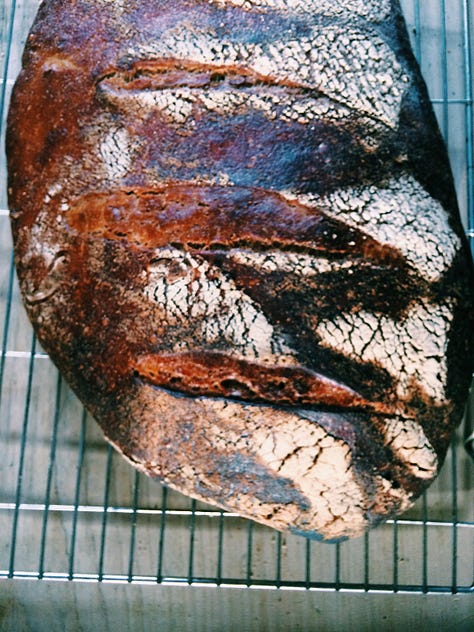
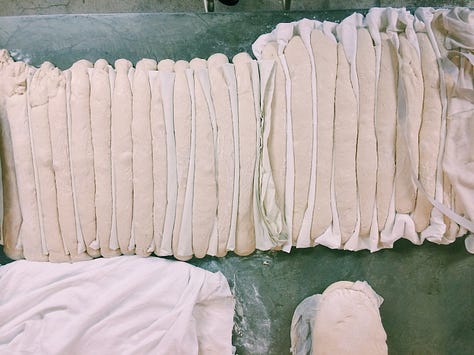
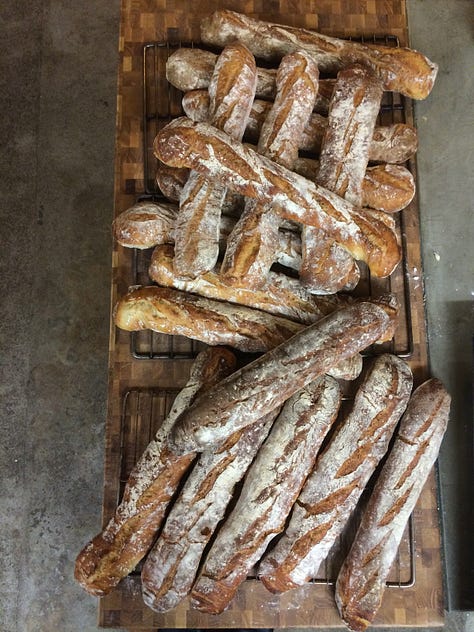
Encouragingly, they gassed me up, like a fully fermented fluffy dough. They convinced me to overcome my fear of public speaking and to give the rest of the staff some insights into the process. A workshop as such. It was my first sourdough workshop, but it was to be my last day at the cafe. The next day, we headed off for America.
It was so beneficial to start out studying Culinary Arts and work in restaurants, getting hands on experience. Surely the same would be true for bakeries I asked myself. And if I had been this inspired and learned so much from the book, I could no longer only imagine what working in Tartine would be like; I had to go experience it firsthand.
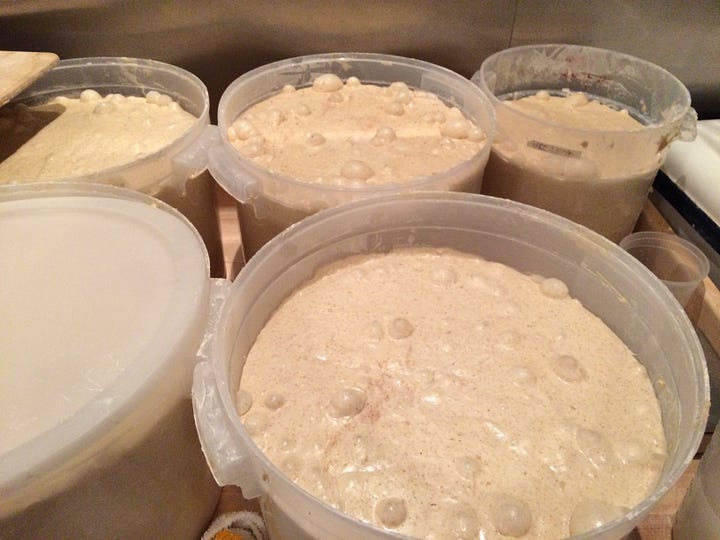
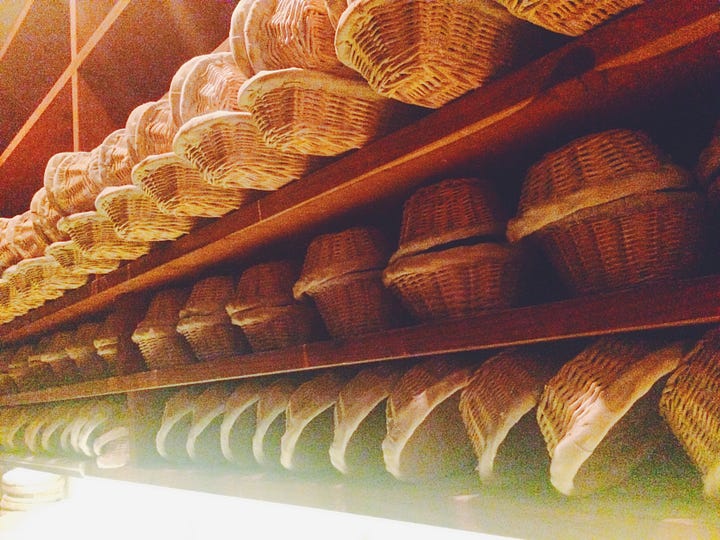
A Journey to the Mecca of Sourdough
The book, Tartine Bakery, and a graduate visa compelled me to move to San Francisco. Myself and Charlotte toyed with the idea of training as bakers in France. With neither of us being able to string a sentence together in French, America it was. From here, I would truly see a wider viewpoint, gain insight, and practice working with the best in the business. My first place to work was Tartine’s sister restaurant, Bar Tartine.
After a failed attempt to arrange a stage in the Bakery I figured why not make some decent connections in the restaurant first while learning some cool new cooking skills. It was an amazing place to behold. The two owner-chefs are two of the most creative cooks I have ever worked with. Still to this day, eating there is one of the best meals I can recall. Every beef tartare I’ve had since is held up, benchmarked against Nick and Courtney's cooking.
While picking herbs in the back kitchen of Bar Tartine, I got to know a couple of the bakers who worked at Tartine Bakery. On busy occasions, they would spill over and mix and bake dough in the prep area of the restaurant. One particularly hot day, Jen requested help to break down some dough that had started to climb out over its tubs while she’d taken a lunch break. I eagerly leapt at the opportunity and put myself forward to give her a dig-out. We soon got chatting about the real reason I had traveled to San Francisco. I went deep into how myself and Charlotte had moved over to gain some experience with a job in the bakery. Soon, a rant ensued, not too dissimilar to this newsletter. I was quickly told to pay attention and shown how to flour the bannetons properly. I must have done something right! By the end of helping Jen shape the dough, she kindly offered to introduce me to Richard Hart, the head baker at Tartine at that time. Richard warmly invited me in for two days of learning once I had finished at the restaurant.
From the moment I walked into the back of the bakery, I did my best to absorb every aspect of their setup that I possibly could. I enjoyed each ebb and flow of the daily processes. From the laid back nature of things to the particular ways certain breads were shaped. I eagerly put myself forward for a job at the end of the two day stint. Unfortunately, at that time, the line to work at Tartine was as long as the queue out front to get bread and pastries each day.
MH Bread and Butter
A new weekly routine manifested as a visit to the bakery for my favourite pastry. Also, more importantly, sticking the head in the back door for the chats with the bakers and constantly checking to see if any roles had become available. My persistent pestering paid off; Richard recommended a position with their old baker and friend Nathan Yanko. Nathan had just opened a new bakery, MH Bread and Butter, 30 minutes north of the Golden Gate Bridge in San Anselmo in Marin County. I jumped at the opportunity.
Over the next 10 months, my lonesome nightly pilgrimage led me across the Golden Gate at 2 a.m. MH became my temple of bread. Nathan was a slick mentor, never saying more than what was needed but always offering help and guidance in all aspects of the process. A challenging, complicated, yet thoughtful approach that used both science and intuition to create these amazing loaves. Loaves beamed out of the oven with a deep mahogany brown that I had previously struggled to recreate at home on my own. Scores and dog ears that burst open from the powerful oven spring. I quickly realised this was only possible to achieve if every element of the process was done just right.
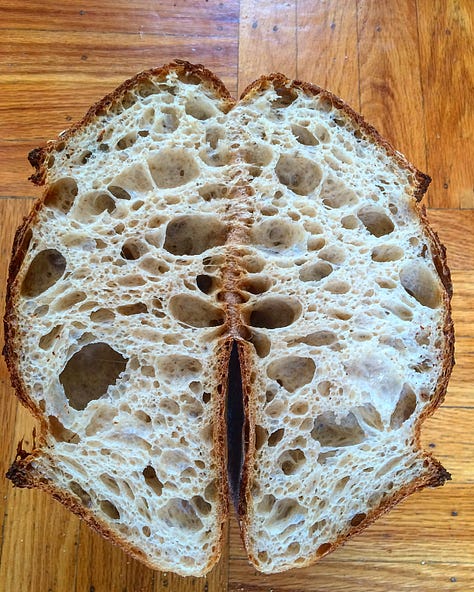
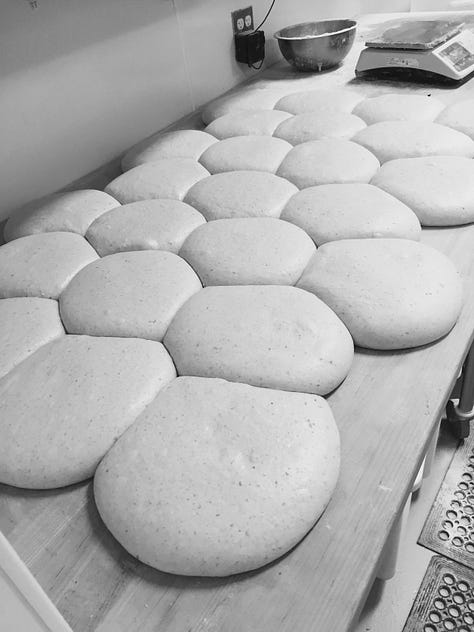

Through repetition, I built muscle memory, and over time, I came to crave the movements of the whole process. From scaling ingredients to folding dough to making staff breakfast. It became more than a mantra; the daily movements were my Tai Chi, my meditation. Soon, scaling the dough became my favorite game. Aiming to nail the exact weight each time in a row. Attempting a new p.b. and being crowned KING OF THE BAKERY. A culmination of all the things I had been searching for. I couldn’t have asked for a better environment in which to learn.
After an introduction training period and learning the ropes, Nathan allowed me to come up with some flavourful loaves to put on the menu as a weekly special. I stuck on my chef's hat. I knew there was some left over miso that had been taking up valuable real estate in the walk-in fridge. Waste not, want not. I toasted sesame seeds as dark as the crust of the bread and searched out a little salty soy to bridge the gap. The soy would help add a little liquid to the mix as well. All three ingredients bouncing off each other, making for a very tasty paste. As flavour bells went off in my mouth, I was brought back to banging broths and Asian-inspired specials that my chef friends Katie Sanderson and Keith Coleman had served up at the Fumbally back in Dublin.
I wasn’t sure how the paste would interact with the delicate dough. Ultimately, making an educated guess and hoping for the best. I folded this paste into some spare country dough as a test loaf before committing to a full round in the oven. It came together by eye and taste - those all important skills you learn as a chef.
This method of folding an ingredient into a dough is well known and documented in Tartine’s book. It is an incredibly effective way to add flavour and create almost a whole new bread from the same familiar dough. Just by adding other ingredients at a specific stage of the dough's development, an interesting new flavour profile, texture, and eating quality can be produced. Somehow the addition of this wet umami paste added to the soft sticky texture synonymous with sourdough. The aroma of the hot, toasted seeds diffused and infused beautifully as soon as they sizzled into the soy miso mixture. A sound, smell, and taste explosion.
This alchemy and experimental approach to cooking and baking captivates my soul and brings me back to the days spent as a kid cooking up concoctions and potions in my makeshift kitchen in the back garden. This experimentation is really only limited by your imagination, provided you follow some basic rules that ensure your baked goods still resemble bread when you go to pull them from the oven. It is this constant tapping into my imagination and being able to be a big kid that keeps the passion alive for me after all these years. It’s what inspires me to teach and pass on the skills and traditions I have learned so others can share in this joy.
I don’t want to downplay the importance of all the people that have influenced my along the road to where I find myself today. At this juncture I’d just like to acknowledge and say thank you to everyone mentioned. Thanks most of all to my Granny, and my own Mam. Sure where would any of us be without our mothers Xx I feel very fortunate to be shaped by such warm and welcoming people.
Shane x
Sharing and feeding others has and always will be at the heart of what we do at Scéal. And in that vein, I’d like to share with you a link to our current round of workshops, which we will be hosting next weekend!
If you feel inspired to come on another journey with me, a deep dive into the dough, or just would like to learn more, we have some sourdough workshops live on our web-shop at the moment.

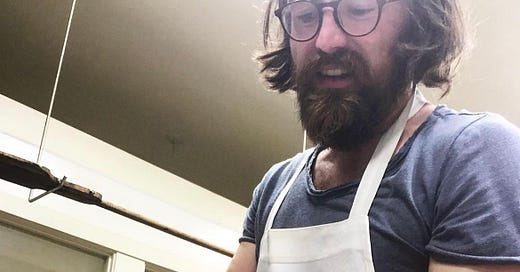



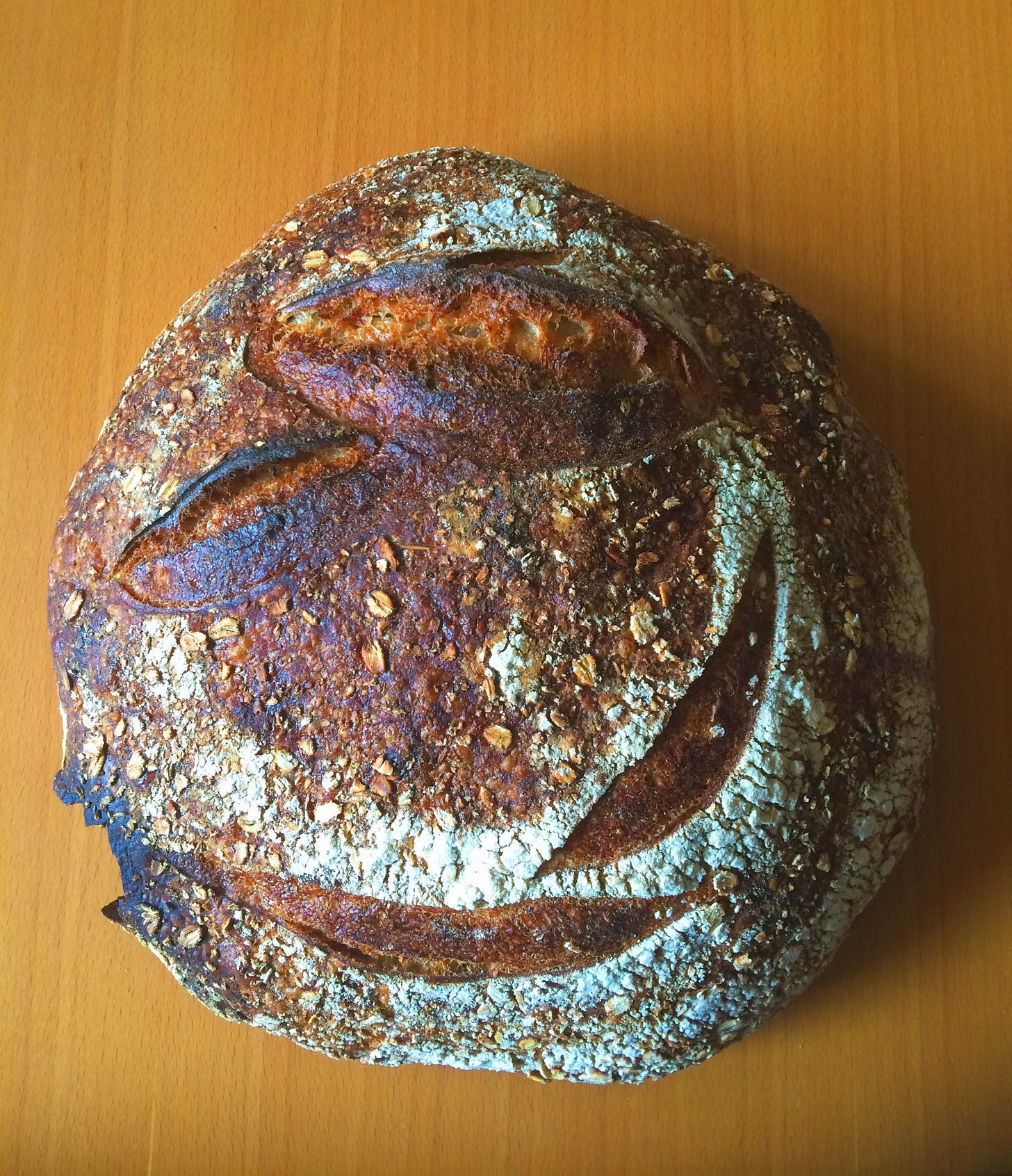
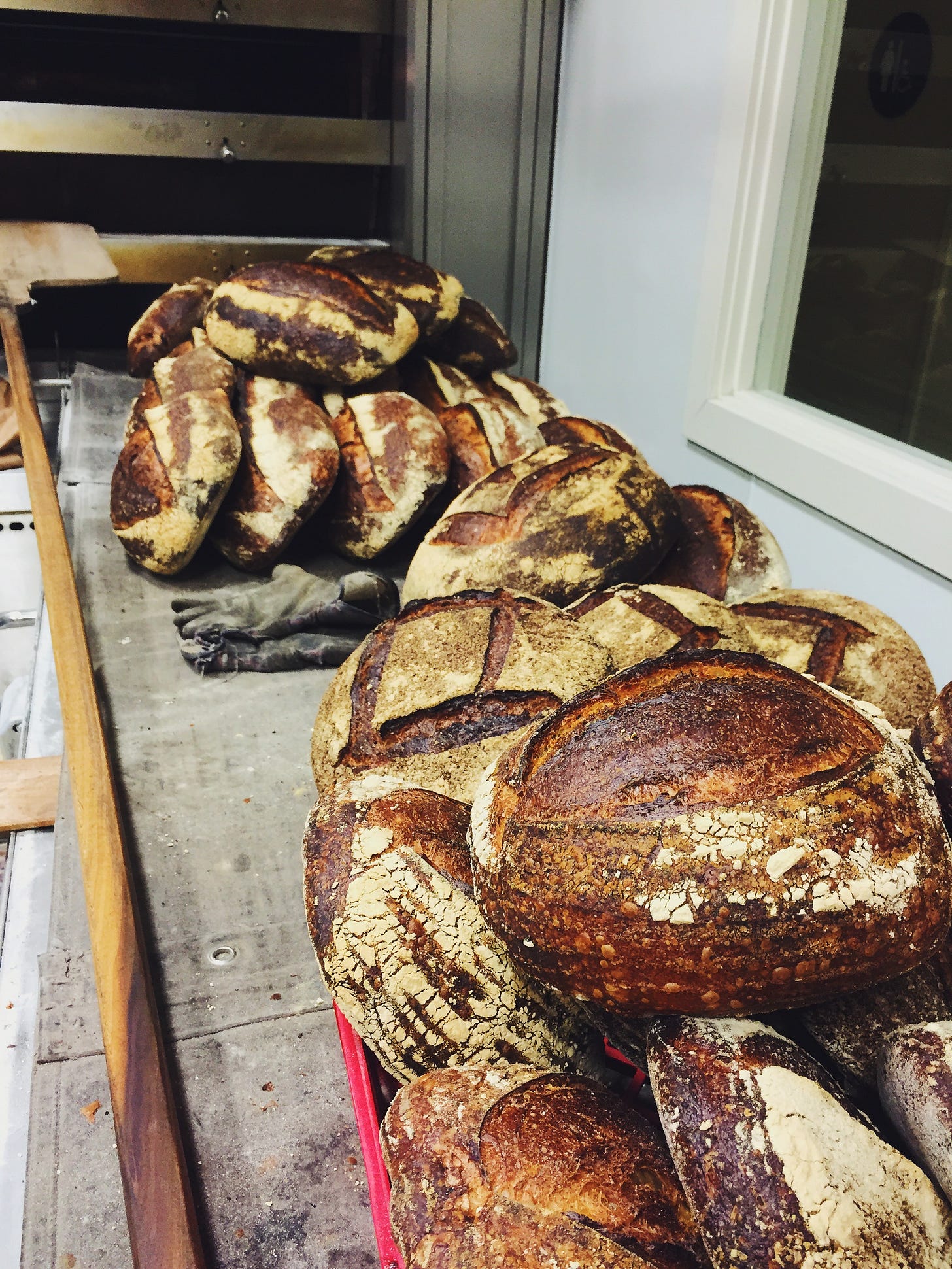
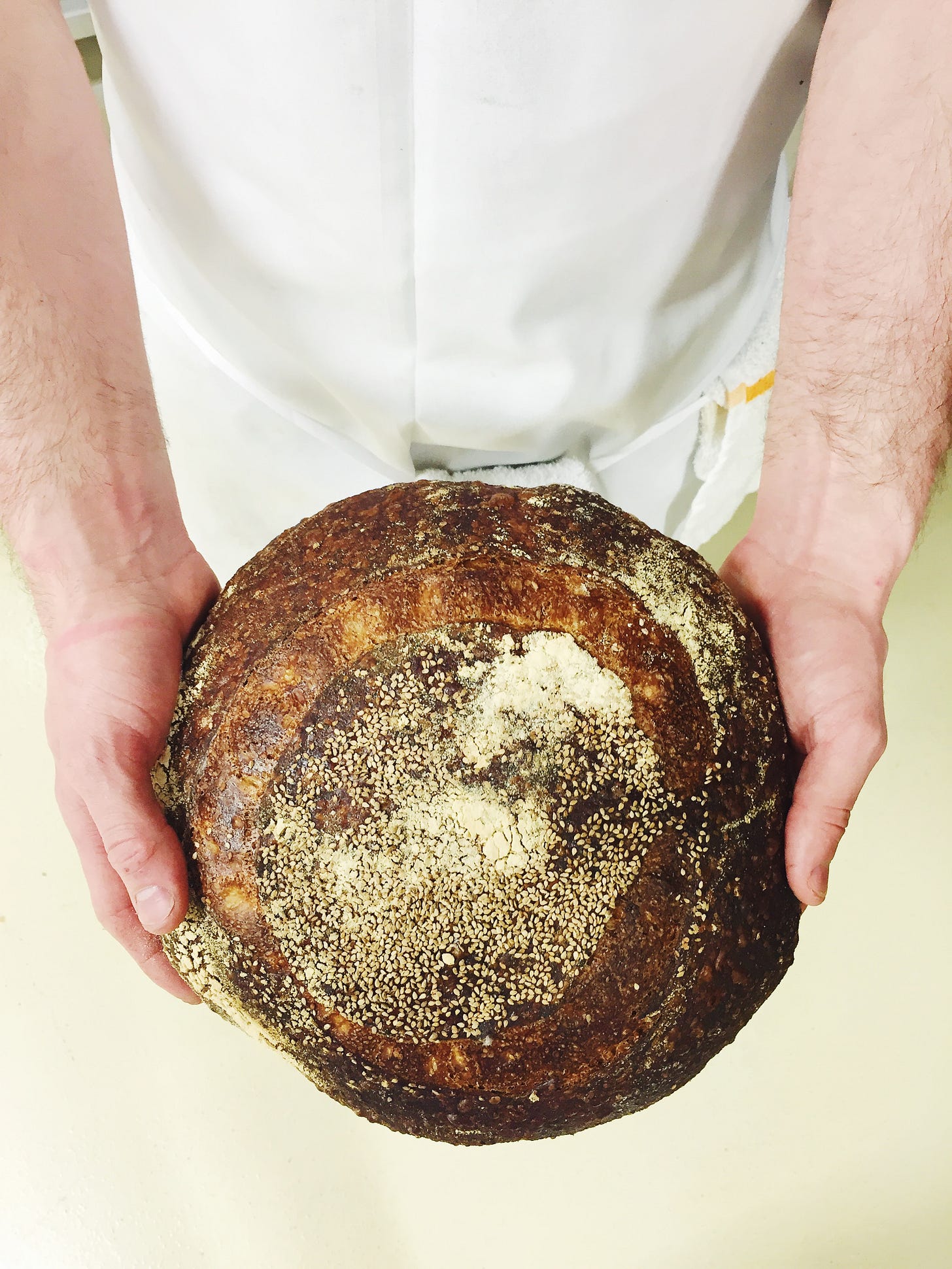
Great article Shane!
Lovely read Shane. Both Geraldines must be so proud! Well done 👏